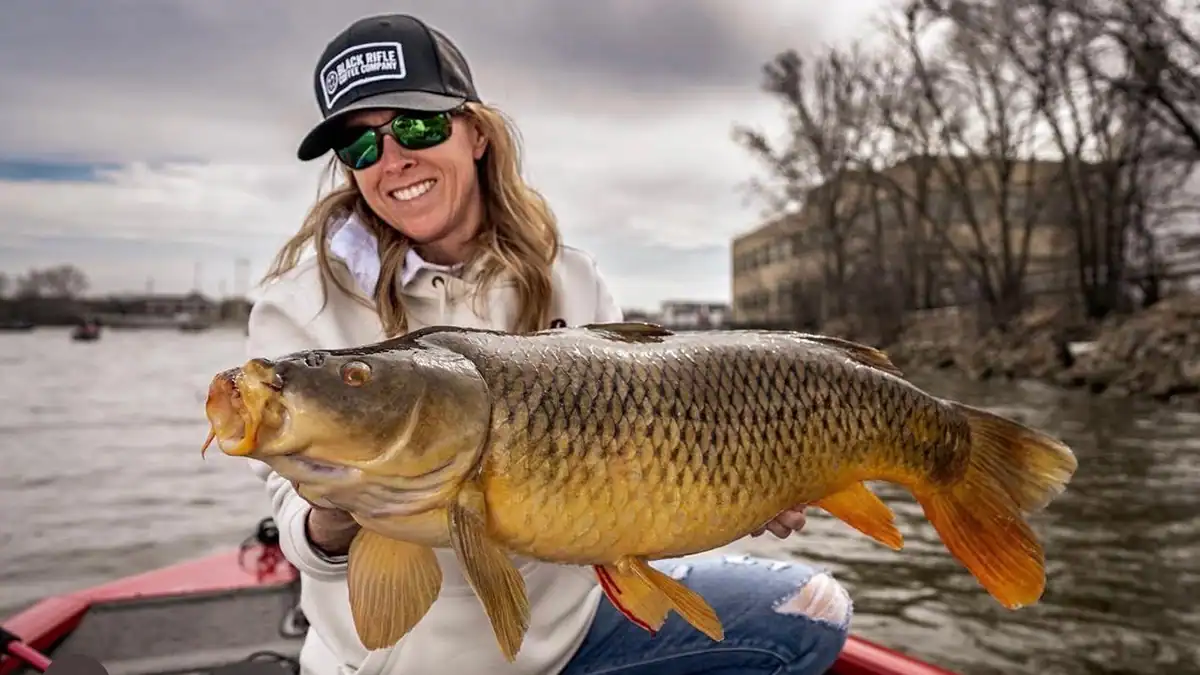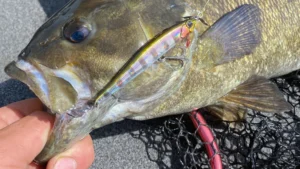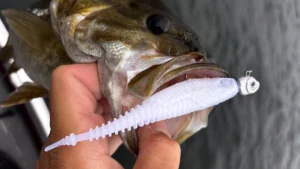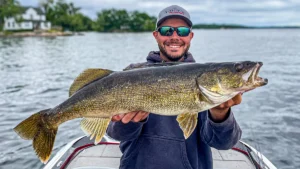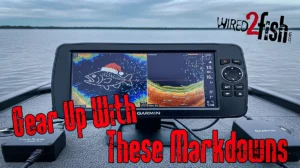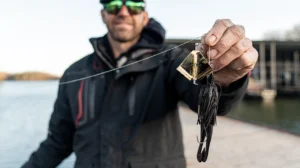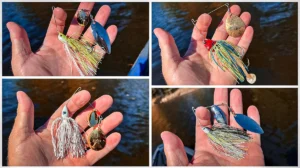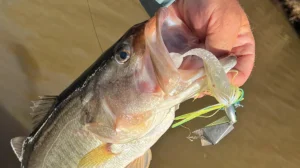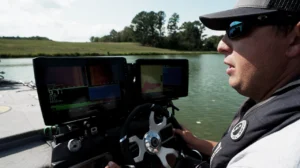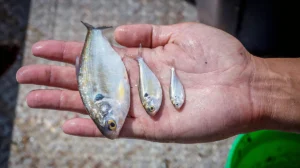I didn’t grow up carp fishing — not in the traditional sense, anyway. Back in high school, living along the upper James River in Virginia, I was broke but restless, and every summer night seemed to stretch out forever. I’d always see those big bronze backs ghosting through the shallows, tailing like redfish in knee-deep water. I didn’t know how to catch them on a rod, so I made do with what I had — an old secondhand bow I rigged up with scraps and makeshift parts.
Most nights I’d wade the river or miles with nothing but a headlamp — no spotlight, no boat, no gas money — just me and the river (and usually a buddy or two). I didn’t know how to catch carp, but I knew they were there, and I wanted to connect. But over time, I developed a deeper appreciation for carp as a species, as well as an aversion for the way they taste, so I eventually tossed the bow back in the junk pile in the corner of the garage and took a more conventional approach.
If you’ve spent most of your fishing career chasing game fish, it’s likely carp have never made it onto your radar. But spend five minutes with a serious carp angler and you’ll quickly realize how criminally underappreciated the “freshwater bonefish” really is.
Understanding Carp Behavior
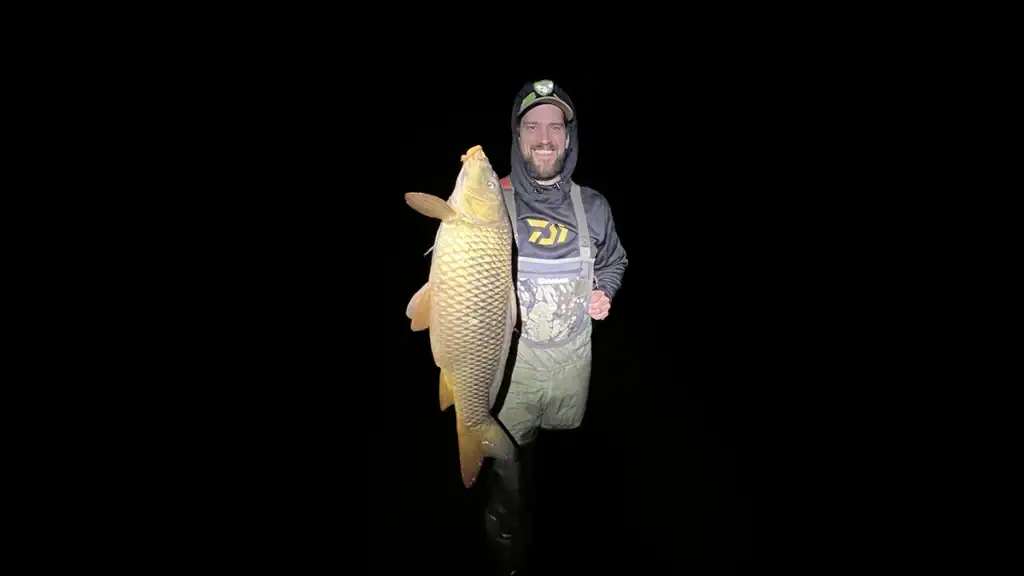
Carp are omnivorous bottom-feeders with a highly developed sense of smell and taste. They root around in soft sediment for invertebrates, aquatic vegetation, and, of course, sweet corn. But they’re not dumb. In heavily pressured waters, carp learn fast and adapt even faster. That’s why carp fishing requires more strategy than most give it credit for. They spook easily, especially in clear water, and they often move in slow, deliberate patterns. But when they feed, they commit. The bite might not feel aggressive, but when a carp realizes it’s hooked, the fight gets wild in a hurry. That’s why it pays to understand their seasonal habits, preferred environments, and feeding patterns before you ever cast a line.
In spring, carp move into shallows to spawn and feed. Summer sees them hanging around warm flats, backwaters, and weedbeds. By fall, they’re bulking up for winter and feeding heavily, especially during warm spells. Winter fishing is possible, but much slower, and better suited for the diehard carp angler.
Location, Location, Location
Finding carp is half the battle. They’re rarely evenly distributed across a lake or river system. Instead, they concentrate around food, shelter, and soft bottoms they can root through. Look for flats near creek mouths, coves with submerged vegetation, or slow-moving current breaks in rivers. You’ll often see signs of carp before you ever spot a fish. Watch for “mudding” — clouds of silt kicked up by feeding fish — or the telltale back or tail breaking the surface in shallow water. On calm mornings, they might even break or roll. Polarized sunglasses help here, especially when you’re scouting new water.
Once you find a spot with consistent carp activity, be prepared to commit. Carp fishing isn’t a run-and-gun sport. You’re not casting and moving. You’re establishing a feeding zone and waiting for them to find your baits.
Baiting Strategies
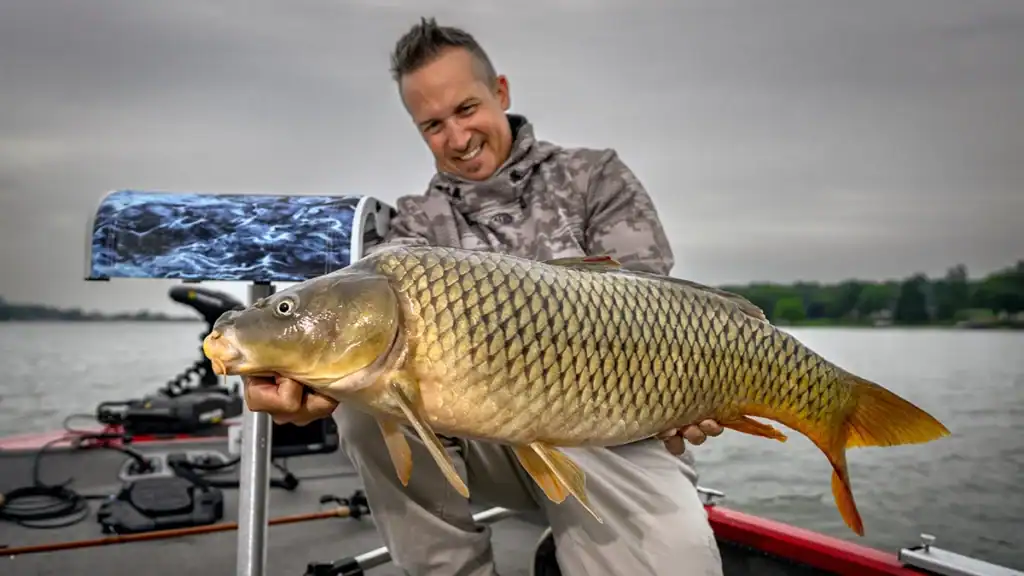
Yes, carp love corn. But so does every turtle, panfish, and curious catfish. If you want to consistently target and catch big carp, you need to up your bait game.
Boilies — those dense, flavored dough balls popular in Europe — are a go-to bait for serious carp anglers. They’re made from a mix of flour, eggs, and attractants, then boiled to harden the outer layer. The texture makes them tough enough to survive pecking bait thieves but soft enough to release scent and flavor in the water. You can buy them pre-made or make your own to match the forage.
Other effective options include tiger nuts, chickpeas, bread, and flavored dough balls. Sweet flavors like strawberry, pineapple, and Scopex tend to work well, but spicy and savory scents — garlic, chili, fishmeal — can be deadly in stained water or in cold temps.
Pre-baiting is a common tactic among experienced carp anglers. This involves chumming your spot with bait for a day or two before you fish it. The idea is to create a safe, reliable food source that draws carp in and builds confidence. If you can condition them to associate a certain area with easy meals, you’re cooking with gas.
Terminal Tackle
You can absolutely catch carp on a traditional hook and sinker, but if you want to do it right, you need to learn the hair rig. This setup changed the carp world decades ago, and it’s still the most effective terminal rig today.
It works by attaching the bait to a short length of line — “the hair” — that extends just beyond the hook. When a carp sucks in the bait, it also takes in the hook without ever tasting metal. As it tries to spit out the bait, the hook catches in the lip, often in the lower corner of the mouth. This reduces deep hooking and increases hookup rates dramatically.
Use a size 4 to 8 wide-gap hook, depending on the size of your bait. Combine that with a braided hooklink, a lead clip system, and a 1- to 3-ounce flat or inline lead. Most anglers fish this rig on a “baitrunner” spinning reel with a sensitive tip or bite alarm system. When a carp picks up the bait and runs, the alarm or free-spool system gives you time to grab the rod and set the hook.
Rods, Reels, and Line

Carp are bruisers. They certainly fight hard, but even more so they fight dirty. Once you’re hooked up, they’re likely heading straight for structure or weeds. You need gear that can absorb shock, but also apply serious pressure when it counts.
A 10- to 12-foot rod with a test curve of 2.5 to 3.5 pounds is ideal. Match that with a baitrunner reel spooled with 12- to 20-pound monofilament or 30- to 50-pound braid. Mono offers forgiveness on the hookset and during long flights, while braid gives you sensitivity and cutting power in thick cover. If you’re fishing around rocks or snags, a fluorocarbon leader can add some abrasion resistance.
Keep in mind, too, that carp fishing can involve long casts, so casting distance and accuracy are worth considering when setting up your rig.
The Long Game
Carp fishing simply isn’t fast-paced. You’ll spend more time watching your line than reeling in fish, but when it happens, it’s electric. A screaming run and brutal tug-of-war is precisely why we do this, is it not? However, a combination of patience and confidence in your setup is the key to success. If the bite’s not happening, try switching up your bait size, flavor, or location. But don’t overthink it. If you’ve found active fish, the bite will come.
